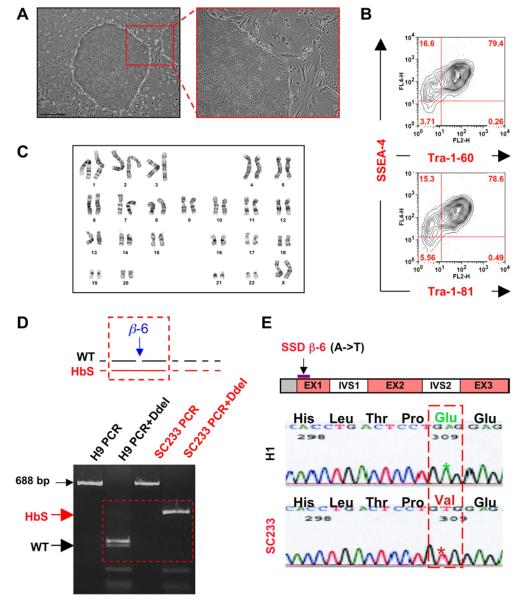Figure 1.
Characterization of pluripotent preimplantation genetic diagnosis-derived human embryonic stem cell (ESC) line SC233 harbouring homozygous sickle cell disease (SCD) mutations. (A) SC233 demonstrates typical human ESC morphology under standard culture conditions (bar = 500 lm) and (B) displays representative pluripotency surface marker staining (e.g., SSEA4, Tra-1–60, TRA-1–81 surface) by fluorescence-activated cell sorting analysis. (C) High resolution G-banding of SC233 revealed a normal, female XX karyotype. (D) SC233 tested positive for homozygous SCD mutations as assessed by DdeI restriction enzyme digestion of PCR-amplified genomic DNA of the beta-globin locus. (E) Sequencing analysis of subcloned PCR products (687 bp) amplified from the genomic beta-globin locus revealed homozygous sickle cell haemoglobin (HbS) mutations. Genomic DNA from either normal human ESC line H1 or SC233 were used as PCR templates. Ten out of 10 SC233 beta-globin locus subclones contained the classic A → T point mutation, which converts polar glutamate into a hydrophic valine at position β-6. EX = executer; H1 = WA01 control; HbS = sickle cell haemoglobin; IVS = intervening sequence; WT = wild type.

